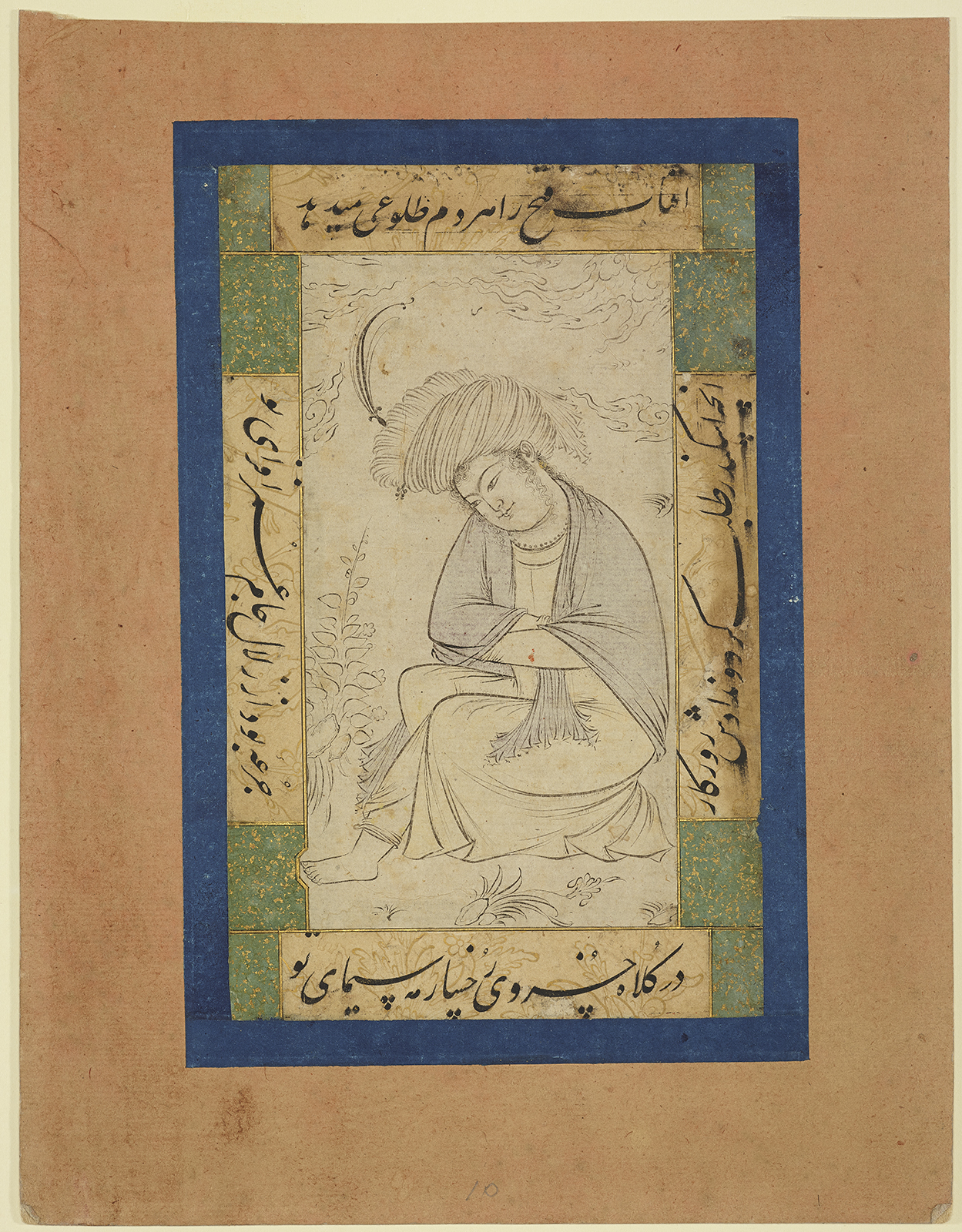Click on the image to zoom
A Young Man in Contemplation
- Accession Number:AKM435
- Place:Iran, Isfahan
- Dimensions:25.6 x 19.9 cm
- Date:1620–30
- Materials and Technique:ink and opaque watercolour on paper
This single-page drawing depicts a young man in contemplation, a topic made popular by the famed artist Reza-e ‘Abbasi (ca. 1565–1635). The anonymous artist also adopts ‘Abbasi’s style, which had enormous impact on 17th-century artists. Originally from Isfahan, Reza-e ‘Abbasi joined the royal court workshop in Qazvin in 1587. His drawings of daily life in nature demonstrated superb draftsmanship and creativity. ‘Abbasi’s particular hallmark was over-dimensioned headgear with an attached feather, as can be seen in this drawing. Here, the young man’s luxurious turban and feather contrast his naked foot, which he stretches before him.
Further Reading
This drawing’s style also reveals stylistic similarities with other drawings in the Aga Khan Museum Collection, including AKM437, AKM438, and AKM440. Parallels include the treatment of wrinkles in the headgear and clothing. The simple plants, rocks, and Chinese-style clouds depicted here are typical elements of 17th-century drawing. The artist’s unsubtle use of colour in this drawing and the black contours of the body make the work appear flat.
This drawing is surrounded by inscriptions in boxes with green, gold-flecked interruptions and a light blue frame. Four lines of poetry are attached together on the album leaf; these verses could be later additions. Therefore, finding a relationship between the drawing and the poetry is possible, but not necessary. The poetry reads:
In the king’s cup your moon-like face
Gives to the sun of victory a new ascent.
All that Iskandar desired and the world did not give him
Is one sip of the pure wine of your life-enhancing cup.[1]
The above poetry is a ghazal from the divan (collected works) written by the Iranian poet of poets, Hafiz. Born in Shiraz in the 14th century, Hafiz had an immense influence throughout the entire Islamic world as well as in the West.
Notes
[1] See Anthony Welch, Collection of Islamic Art: Prince Sadruddin Aga Khan, vol. 3 (Geneva: Château de Bellerive, 1978), 122.
References
Phillip, Filiz Çakır. Enchanted lines: drawings from the Aga Khan Museum collection. 2014. ISBN: 9780991992874
Welch, Anthony. Collection of Islamic Art: Prince Sadruddin Aga Khan, vols. 1 and 3. Geneva: Château de Bellerive, 1972–78.
Note: This online resource is reviewed and updated on an ongoing basis. We are committed to improving this information and will revise and update knowledge about this object as it becomes available.


